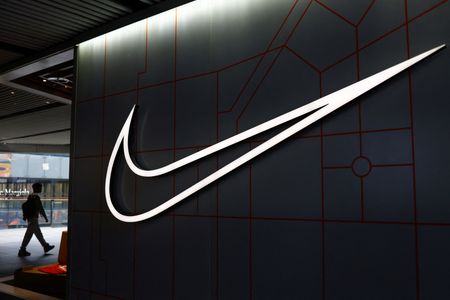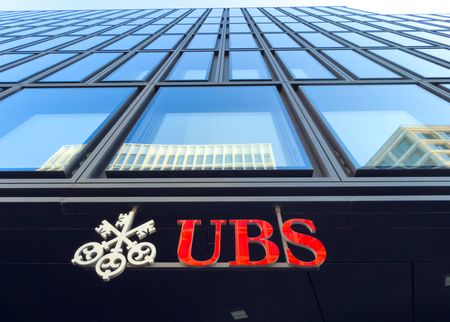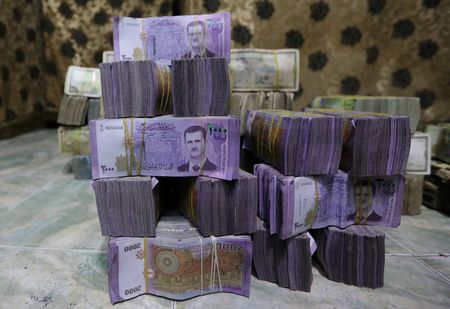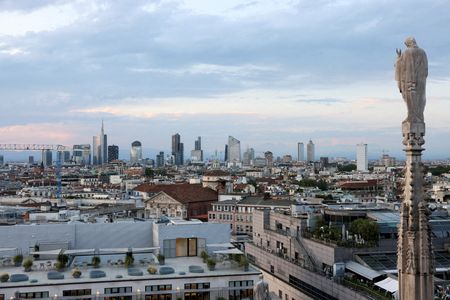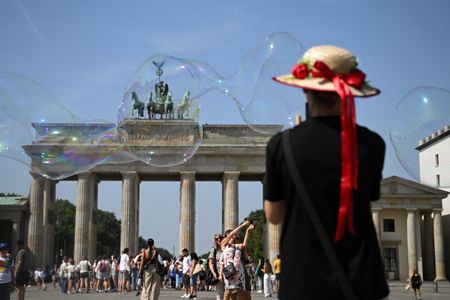By Nicholas P. Brown
NEW YORK (Reuters) -Nike’s push into the booming outdoor recreation market — which will kick off on Monday with the launch of a new trail running shoe — will test whether it can turn a little-known sub-brand into a meaningful growth engine.
The sportswear giant plans to unveil a version of its Ultrafly trail running shoe – branded under its outdoor sub-brand, ACG – at the Ultra-Trail du Mont-Blanc, an ultramarathon in France that begins on Monday, Nike spokesman Jay Paavonpera said.
It is part of Nike’s push to reposition ACG as a serious player in performance trail running. More broadly, the move is in line with CEO Elliott Hill’s strategy to refocus the Nike brand around core sports like running at a time when its dominance is being challenged by smaller rivals.
Nike is playing catch-up in both outdoor recreation, which has surged since the pandemic, and in China, where the populace has taken to outdoor activities like trail running in a big way. The company’s lagging performance in both markets goes some way toward explaining why its share of the global sportswear market has ebbed in recent years, analysts said. Outdoor recreation includes a range of activities including hiking and camping.
Nike-sponsored runners like Anthony Costales will race in the shoe, dubbed the ACG Ultrafly, which is set to hit shelves in spring 2026, Nike said. A similarly rebooted, ACG-branded version of the Zegama trail runner will launch later in 2025.
Brands like Salomon and Hoka “have broken out and done well” in trail running, said Morningstar analyst David Swartz, and “Nike needs to fight back.”
Doing it with ACG – short for All Conditions Gear – will not be easy. The unit, which debuted in 1989 with a focus on hiking and biking, is now associated with “gorpcore,” a fashion trend that incorporates functional gear into stylish wardrobes. It is usually relegated to a shelf or two at Nike stores, often next to “a picture of a guy walking up a mountain, or something like that,” said Swartz.
But with China and ACG, Nike may be playing a long game as it plans to expand its businesses across that market. It established its ACG team as a sub-brand in October and put Angela Dong, vice president for all of Greater China, in charge of the unit. In June, Hill said its biggest opportunity in China is “from a brand perspective, to inspire and invite the 1.3 billion consumers into the world of sport, lifestyle sport and to fitness.”
Sales of outdoor apparel nearly doubled in China between 2019 and 2025, with outdoor footwear ticking up 65% over the same period, according to Euromonitor International data. Nike, though, has logged double-digit sales declines in China in each of the last three quarters.
“China has remained a challenging market for Nike,” wrote Zacks Equity Research. The company has faced heavy competition in China from other retailers, and the nation’s own economic struggles and high youth unemployment have inhibited spending.
Nike’s share of the global sportswear market has fallen to 26% from 29% in 2021, according to Euromonitor, as competitors like Hoka, the title sponsor of the Ultra-Trail du Mont-Blanc, use trail running to fuel growth. That company’s shoes were also once a niche brand before going mainstream, Swartz said.
Launching at a Hoka-sponsored event may be Nike’s attempt to steal some of its rival’s thunder, said Jessica Ramirez, co-founder of retail industry consultancy the Consumer Collective. It is a way for Nike to “flex its financial muscle” over smaller brands, Ramirez said.
(Reporting by Nicholas P. Brown in New York; additional reporting by Samantha Marshak in New York; Editing by David Gaffen and Matthew Lewis)

